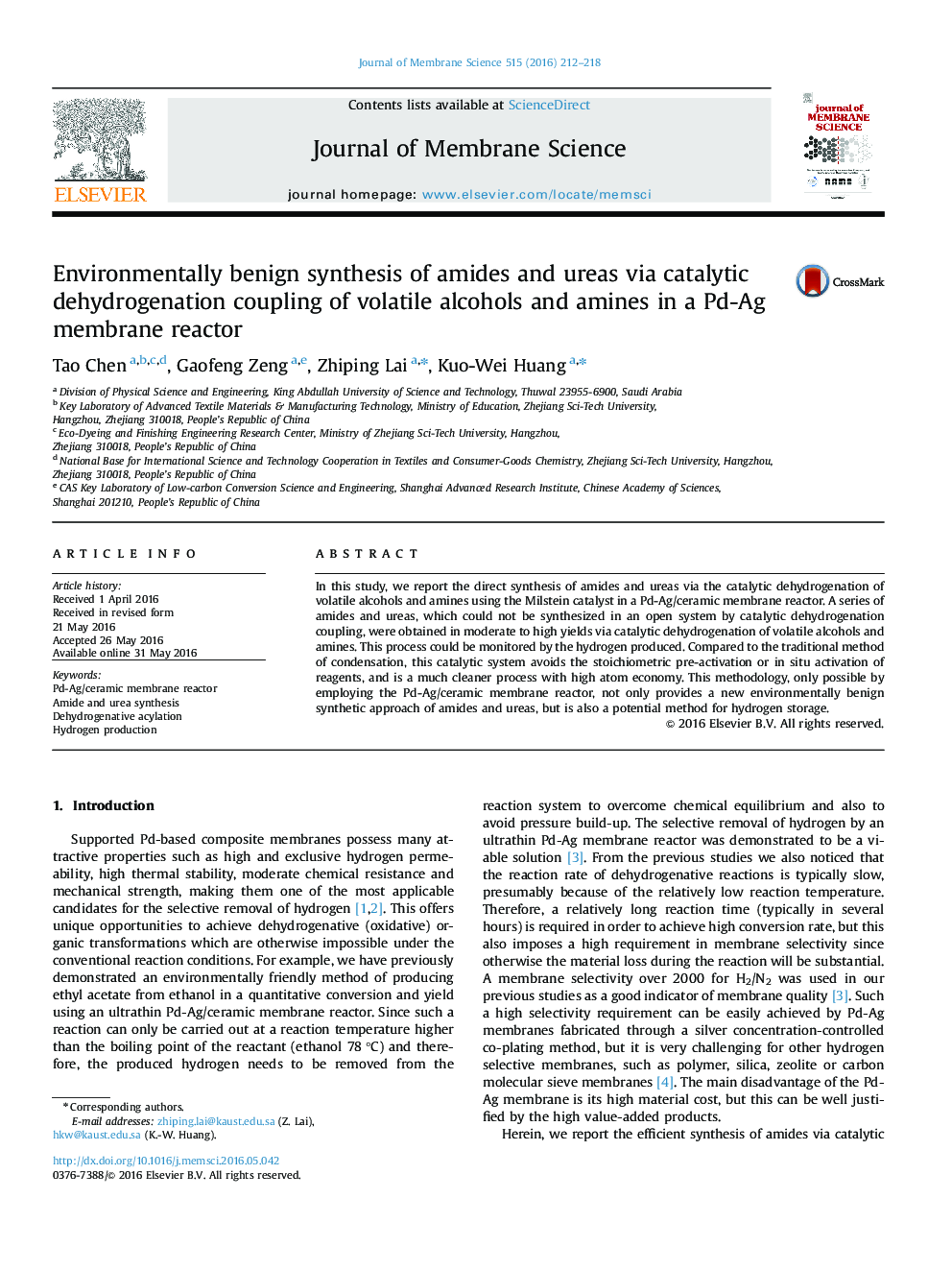| Article ID | Journal | Published Year | Pages | File Type |
|---|---|---|---|---|
| 632391 | Journal of Membrane Science | 2016 | 7 Pages |
•An environmentally benign synthetic approach for amides and ureas were developed.•Dehydrogenation coupling of volatile alcohols and amines were realized.•Pd-Ag/ceramic membrane reactor for hydrogen separation was adopted.•A potential method for hydrogen storage was provided.
In this study, we report the direct synthesis of amides and ureas via the catalytic dehydrogenation of volatile alcohols and amines using the Milstein catalyst in a Pd-Ag/ceramic membrane reactor. A series of amides and ureas, which could not be synthesized in an open system by catalytic dehydrogenation coupling, were obtained in moderate to high yields via catalytic dehydrogenation of volatile alcohols and amines. This process could be monitored by the hydrogen produced. Compared to the traditional method of condensation, this catalytic system avoids the stoichiometric pre-activation or in situ activation of reagents, and is a much cleaner process with high atom economy. This methodology, only possible by employing the Pd-Ag/ceramic membrane reactor, not only provides a new environmentally benign synthetic approach of amides and ureas, but is also a potential method for hydrogen storage.
Graphical abstractUsing a Pd-Ag membrane reactor makes it possible to use homogeneous catalysts as a novel approach to prepare amides through direct dehydrogenation coupling of alcohols and amines at elevated temperature, and the removal of hydrogen during the reaction pushes the reaction to be completely almost quantitatively.Figure optionsDownload full-size imageDownload high-quality image (198 K)Download as PowerPoint slide
